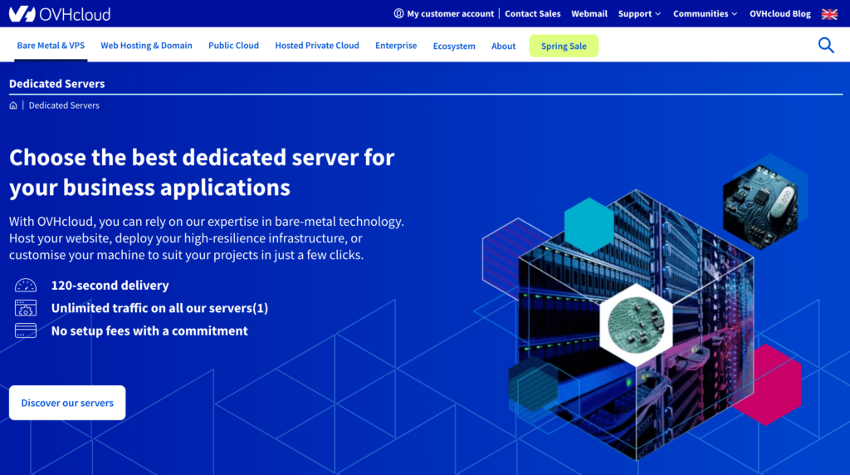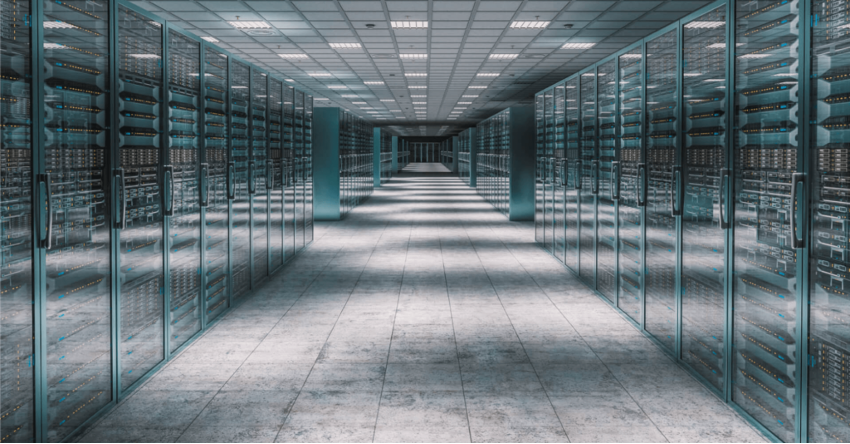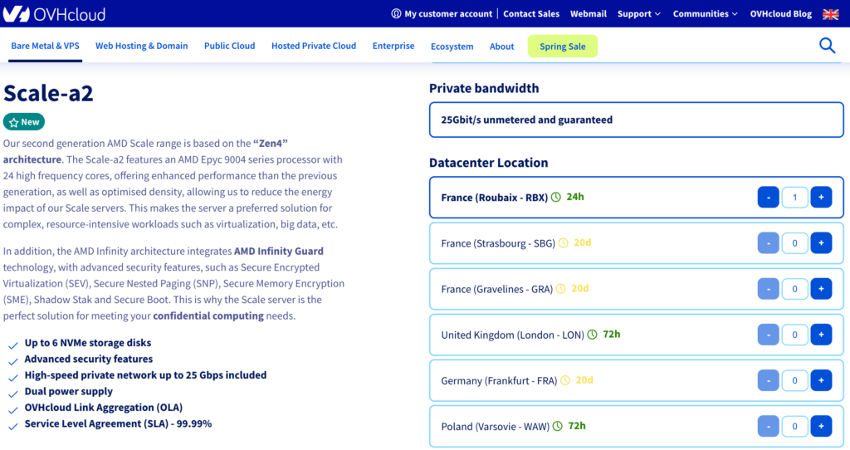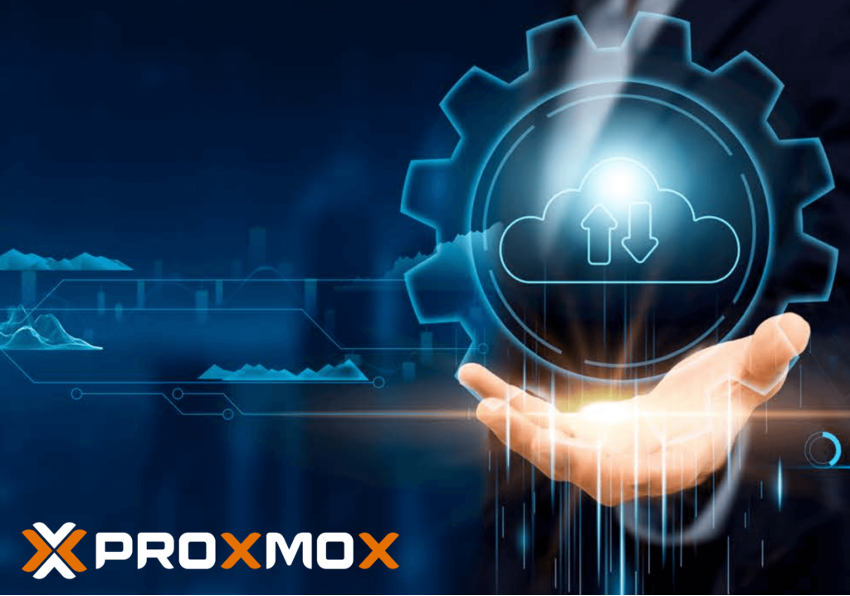OVHcloud’s IaaS (Infraestructure as a Service) services allow us to hire dedicated servers (bare metal) for rent that we can have at our disposal in a matter of minutes. There is a wide range of options (rise, advance, storage, scale, high quality, etc.) from which we can choose according to our needs.
In this article we will see how we can use these dedicated servers to create Proxmox VE Ceph Clusters with the same functionalities that we would have if we used proprietary servers in our facilities (on premises). In addition, we will see how OVHcloud services allow us to create a very complete DRP (Disaster Recovery Plan) to achieve maximum resilience for our data

Ceph Proxmox VE Cluster
A cluster of Proxmox VE servers combined with a Ceph distributed storage system allows you to create a highly available, load-balanced, horizontally scalable, hyperconverged virtualization infrastructure with ease.
Let’s first look at some concepts to fully understand what a Proxmox VE Ceph Cluster is.
What is a cluster?
A cluster in computing refers to a group of interconnected computers or nodes that function together as if they were a single entity. Clusters are used to improve the availability, performance, and scalability of applications and services. There are different types of clusters, but in general they share the objective of providing greater processing capacity and redundancy.
What is Ceph?
Ceph is a distributed storage system designed to provide object, block, and file storage in a single unified cluster. . Proxmox can use Ceph as a virtual machines storege.
What is a Proxmox VE Ceph cluster?
It is three or more servers forming part of a Proxmox cluster and using Ceph as a distributed storage system, all managed from the Proxmox web interface, thanks to which we achieve a hyperconverged virtualization infrastructure.
What is hyperconvergence?
A hyperconverged virtualization infrastructure is an integrated system that combines compute, storage, and networking in a single environment. This simplifies management, improves efficiency, and enables easy scalability, making it easy to create and manage virtual machines in a single cluster.

By means of the OVHcloud dedicated server service we can create a Proxmox VE Ceph cluster with three or more nodes in the same way that we would do if we acquired our own servers to create the cluster in our facilities, but with the versatility and advantages that come with using rental servers instead of proprietary hardware, among which we can mention:
- Abstraction of the hardware layer since any breakdown will be solved by OVHcloud and, if necessary, they will replace the damaged parts or even the entire server.
- We forget about hardware obsolescence. After a few years we will be able to add new servers with the latest technologies to our cluster and eliminate the old ones in a completely transparent way for the user of the virtualization environment, without any interruption of service.
- Easily add more nodes to our virtualization cluster to increase your computing power. In a matter of minutes we can have new servers that we can add to our cluster.
The large number of dedicated server options that OVHcloud makes available to its clients allows us to create Proxmox VE Ceph Clusters for practically any client. We can use different CPUs depending on our needs, large amounts of RAM, large NVMe disks, dedicated 25Gbps networks for Ceph communication, the vRACK service to connect our servers, dedicated IP ranges, etc. All this allows us to cover practically the needs of any client.

DRP (Disaster Recovery Plan)
A DRP (Disaster Recovery Plan) is crucial to maintaining business operations in the event of disasters, guaranteeing the continuity and protection of essential data. It is very important to have a good DRP to ensure the resilience of the data.
What is a Disaster Recovery Plan?
Disaster Recovery Plan in IT refers to a set of strategies, policies and procedures that an organization implements to restore its critical systems and data after a catastrophic event or disaster that causes significant disruptions to operations. normal.que cause interrupciones significativas en las operaciones normales.
These events may include:
- Natural disasters: Such as earthquakes, floods, storms, etc.
- Man-made disasters: Such as cyber attacks, infrastructure failures, acts of vandalism, etc.
The goal of the Disaster Recovery Plan is to minimize downtime and ensure business continuity, allowing the organization to recover quickly after a disaster.

DRP (Disaster Recovery Plan)
Below we will list several options, taking into account that our DRP may have some of these or even a combination of all of them, depending on the level of data resilience desired. Option 1: Proxmox VE Ceph Cluster distributed in OVHcloud 3-AZ region Our partner OVHcloud has a service called 3-AZ region thanks to which we can distribute a Proxmox VE Ceph Cluster made up of dedicated servers (bare metal) between three different data centers separated by a few tens of kilometers. These data centers that make up the 3-AZ region are interconnected through redundant fibers with minimal latency, thanks to which we can set up a Proxmox VE Ceph Cluster distributed within said region. This provides us with great resilience of the data against incidents located in one of the data centers since our virtualization service will not be affected by it.

Option 2: Proxmox Backup Server with frequent replication Make use of a Proxmox Backup Server (PBS) or by means of our PBS Online service in a data center (even a different country or continent) where you have a backup copy of all virtual machines, maintaining a history of various versions over time depending on the space available for copies. For those virtual machines that are more critical, you can even make more frequent copies (for example, every hour) so that if you have to activate the DRP, the data loss is as little as possible. This option can be implemented using the PBS Online service, the OVHcloud IaaS service to rent a dedicated server on which to install the PBS or any other cloud service or even own facilities in which to locate the PBS.
Option 3: Ceph Replicación Create a Proxmox VE Ceph Cluster identical to the production one in a data center geographically separated from the main cluster and activate Ceph replication between both clusters. This is the option with the least data loss if we compare it with option 2, but much more expensive since we have to have a cluster equal to the main cluster that we will only activate in case of disaster. This option can be implemented using the OVHcloud IaaS service, given that they have data centers distributed in several countries and continents. Therefore, it would be viable to host the main cluster in a data center and the replication cluster located in another country. It can also be implemented using different cloud providers and also on the customer’s premises if he has geographically separated data centers.
Conclusion
As we have seen throughout this article, we can create a hyperconverged virtualization infrastructure with great data resilience using the Proxmox VE hypervisor and dedicated OVHCloud servers. A Proxmox VE Ceph Cluster with three or more nodes located in a 3-AZ region of OVHcloud, in combination with a PBS (Proxmox Backup Server) hosted in a different data center and country is a highly available solution, with high scalability and with great data resilience. If we also add an identical cluster in another data center outside the 3-AZ region with real-time Ceph replication, we can have a DRP (Disaster Recovery Plan) that allows rapid disaster recovery.



